I’ve been using the same rollermill white flour for a year and a half, and pretty much every batch I’ve received has been consistent as I would expect from a large mill with all the whistles and bells of test bakers and Farinograph machines. However all of this consistency changed with my last arrival of the flour 3 weeks ago. I made these two sourdoughs here plus some yeast loaves. The yeast loaves were fine, I didn’t notice a difference with performance but it wasn’t the case with the sourdough loaves.
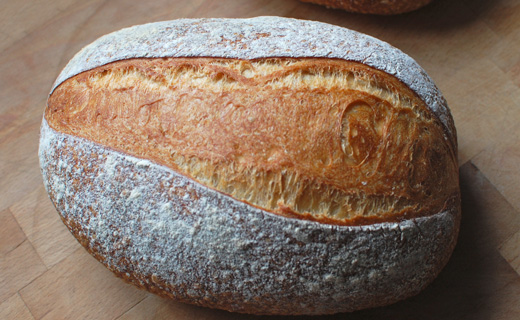
(100% rollermill sourdough)
The sourdough loaf above made with 100% of this rollermill flour performed badly, so badly in fact that the loaf below mixed with 50% white stoneground amaretto flour from Anne’s mill out performed the above loaf with ease. And it shouldn’t, normally an all white rollermill dough goes on for hours.
Adding stoneground flour (proper stoneground flour), even when it’s white flour speeds the process up since there’s a live germ and more enzyme activity from the aleurone layer in the flour.
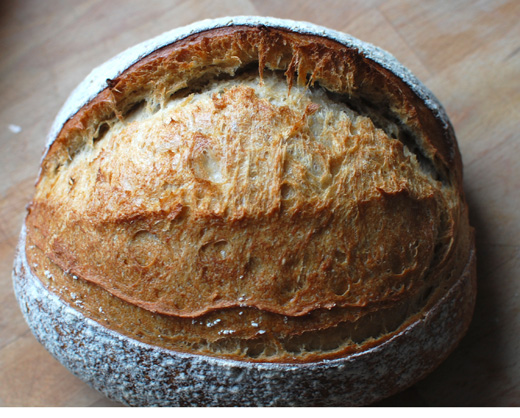
(50% rollermill 50% stoneground white amaretto sourdough)
The 100% rollermill flour dough didn’t take as much water as it normally takes by quite a large difference, the dough proved too fast, didn’t hold its shape as it normally does and on slashing it wanted to spread out sideways like a pancake. You can see from the shape of the slash how the loaf spread sideways as appose to rise upwards, the dough should have held its shape in order to allow the steam push loaf upwards causing a rip. This loaf acted as if it was on its last legs of proving which it shouldn’t have with the time I gave it.
The loaf with stoneground flour which was made alongside it could’ve proved for longer as the resulting crumb was on the tight side.
The crumb from the 100% rollermill flour as you can see below was ready in that relative short proving time.
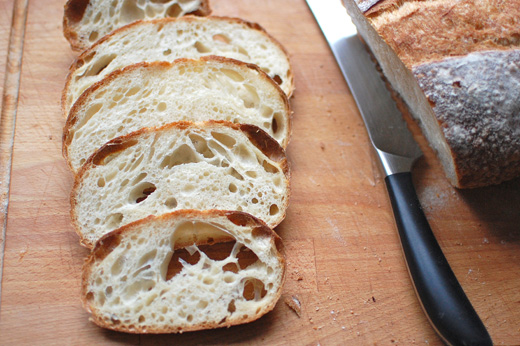
(Crumb of 100% rollermill)
Why hasn’t this flour’s bad performance been picked up by machine or test bakers? Could it be they’re not testing against sourdough?
Yeast loaves don’t encounter the problems of sourdoughs because they don’t accumulate the acidity levels a sourdough dough does. Even when making long fermented yeast loaves with a preferment of some kind the dough will have fresh flour and usually fresh yeast added the following morning and this fresh flour will have its gluten intact, giving the dough structure through to the baking stage.

(Crumb of 100% rollermill loaf)
The percentage of protein a flour has is misleading because it will give you all of the protein that flour contains which is not necessarily all going to be the gluten-forming protein.
The wheat kernel will contain protein which is not gluten-forming, this protein is usually around the skin and the eulerone layer of the kernel. The gluten-forming protein, gliadin and glutenin, are found inside the kernel in the white starchy part, which is why white flour mainly contains the gluten-forming protein, the other protein is discarded when the flour is going through the streaming process.
The way flour is processed the mill will stream a flour many times, each time removing the ‘darker’ parts of the flour in order to obtain the white centre of the kernel. After all the different streaming the flour has gone through, the mill will have different flours with varying darkness. The mill will then decide if it will re-introduce some of the darker flour back into the very white flour and how much. This is a good thing not only for economic reasons of not wasting part of the kernel (an argument laid at stoneground milling of white flour) but it’s also good for artisan bread because the darker flour will have enzyme activity and richer nutrients for the microbial activity in long fermented yeast doughs and sourdoughs.
How much of the darker shades of flour to add back to the purest white flour is all a balancing act for the mill, he’s job is to sell different flours to the baker for different style breads to create certain effects, that’s the theory of these different flours.
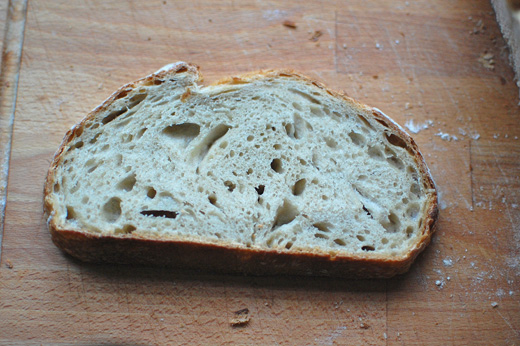
(crumb 50% rollermill 50% white stoneground amaretto, on the too tight side for my liking, should’ve been proved for longer)
I’m not going to go into details here, but briefly the gluten subject gets further complicated because even if you only had the purest white flour made from the very heart of the kernel, this very white flour will contain pretty much mostly gluten-forming proteins gliadin and glutenin, well…it’s not the amount of these two proteins together that matter but the quality of the gluten itself.
To be more specific, it is the amount of the glutenin HMW subunits which determine the quality of bread flour. The reason this is important is because acidity build-up in sourdough over its long fermented time effects gluten, as well as the enzymatic activity.
So here I am with my last batch of white rollermill flour which states it’s the same protein level as all the other batches previously but it means very little.




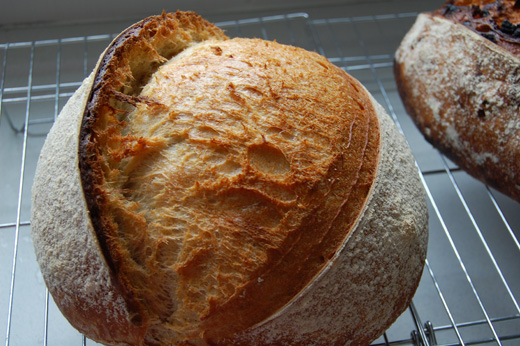

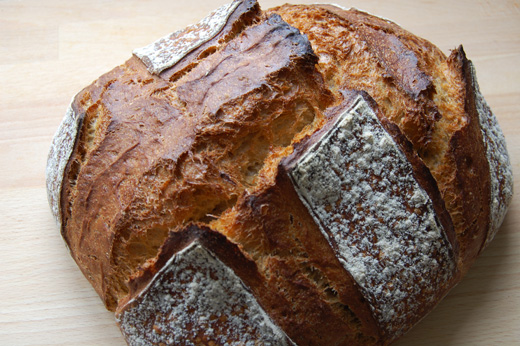
























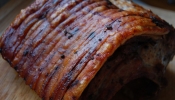



{ 4 comments… read them below or add one }
Hi Azelia
Interesting! I recently made a rustic loaf using a preferment from Lammerman’s Bread book. As I’d had a few failures, I just used Morrison’s cheapo own brand white flour with a small amount of Dove farm Rye flour.
It worked perfectly, the taste was fantastic and as a preferment should it tasted better at 2 days old. It only lasted 3, so I can’t comment on the longevity.
Maybe using some top-quality flour would have tasted better, you’d have to do a blind tasting to see and I don’t have time at the moment. But even if it did, it shows you can make bread better than you can buy using ‘any old flour’.
I’m amazed, I must say. Seldom do I come across a blog that’s both equally educative and engaging, and let me tell you, you have hit the nail on the head. The problem is something too few people are speaking intelligently about. I’m very happy I came across this in my search for something concerning this.
hi Johnny – have a read through this post on how flours are blended it will give you some background information http://www.azeliaskitchen.net/blog/baking-by-numbers-thats-what-bakers-do/
hi Loyd – thanks and welcome.